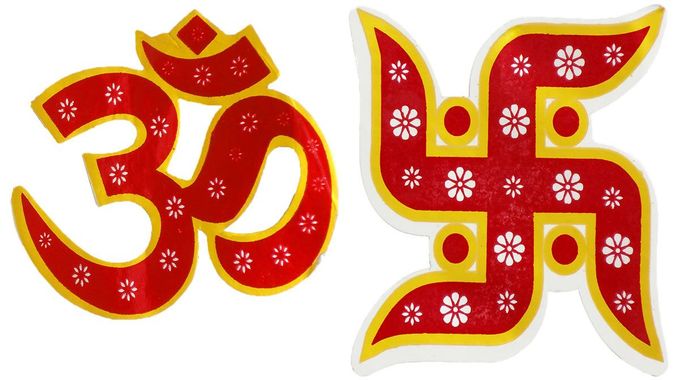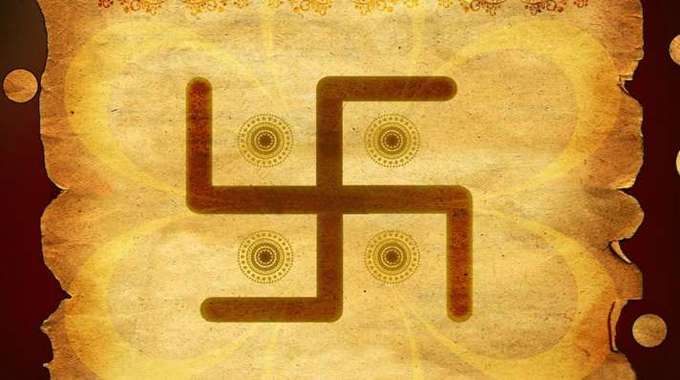
A geometric figure and a religious figure from the ages, the swastika has its own importance in Hindus. The word Swastik derives from Sanskrit and means “conducive to being well or auspicious”.
It has been a symbol of auspiciousness of the eternal religion since time immemorial.
Origins
This word has a definite syllable in Sanskrit. The swastika is derived from roots which means or well ‘or auspicious and which means’ being’. Therefore, it is a symbol through which everything is auspicious. Talking about its cosmic origin, the swastika represents the creation of the Almighty throughout the universe.
Twenty-one divisions, the Hindu astronomy expert, are known as constellations that divide the ecliptic circle of the Cosmos. Each of them is named after a major beginning or asterisk in the respective part of the zodiac.
Unlike Chitra Nakshatra, in the last and twenty-seventh Akashvad, Revathi considers the deity as Pusha. In the middle between Chitra and Revathi, the Second-Akashvada-Shravan Nakshatra is situated. The vehicle is presented by Garuda, its patron deity is Vishnu.
Midway in the direction of Chitra from Revathi is located in the eighth constellation, Pushya has Brahmapati as its patron deity. In this way, the celestial sky forms in four directions. The center of this cross is the pole. Drawing a line from the pole, stars known as the Great Bear can be seen.
The Hindi word Saptarishi means seven sages. At the present time, the seven sages are Gautama, Bharadwaja, Vishvamitra, Kashyapa, Jamadagni, Vasistha and Atri. The swastika is formed by joining the cross and the line made by the Saptarishis.

Also Read: Turmeric: Uses and astrological benefits
Swastik in Rituals
- Being auspicious, the swastika is important during religious rites and religious worship by Hindus. In
- Hinduism, it is very common for people to see this swastika symbol at the entrance of new articles, appliances, new vehicles or businesses.
- This symbol of the swastika represents Mars – peace, auspiciousness, success and harmony in all the ventures initiated for life.
- Swastik is a symbol of om-kar.
- In addition, the swastika is a symbol of purity that removes evil elements and brings good luck.
- Also, this auspicious sign is inscribed on the doors of the house and is tied on the floor of the temples as a symbolic form of auspiciousness.
- The swastika depicts the sun, the “wheel of life” in all four directions
Apart from this, the Swastika in India has always embodied the following sentiments
- Welfare means ultimate liberation
- A man’s quest to gain spiritual knowledge
- Prayer for salvation to all living beings
- Covers the whole universe
- The symbol of Goddess Lakshmi – the symbol of wealth
- The symbol of Vishnu- The four swastikas represent the four hands of Lord Vishnu. And, Vishnu is the protector of the four directions.
- Protection from all four directions
- A symbol of Sanatana Dharma and a sense of peace and salvation for all beings.
Also Read: Sandalwood: Health and Beauty benefits
Significance in other cultures
Not only in India, but the symbol of the swastika has been valued for centuries in various other countries like Egypt, Greece, Italy, Japan, England and the United States. The earliest painting of the Swastika appears in a Paleolithic case, which is 10.000 years old.
One can also see it on early Christian tombs and Palestine’s 2000-year-old Jewish temples. However, the swastika can be a religious symbol in these religions. However, it does not mean to be redemptive, as in Hinduism.
In addition, the swastika is one of the sixteen auspicious symbols that can be found on the lotus of the supreme personality – Parbrahma Purushottam Narayan, the Supreme God.
In the Padma Purana, Lord Brahma describes it to Lord Narada. Furthermore, the swastika is one of the eight signs present in the right sole.
